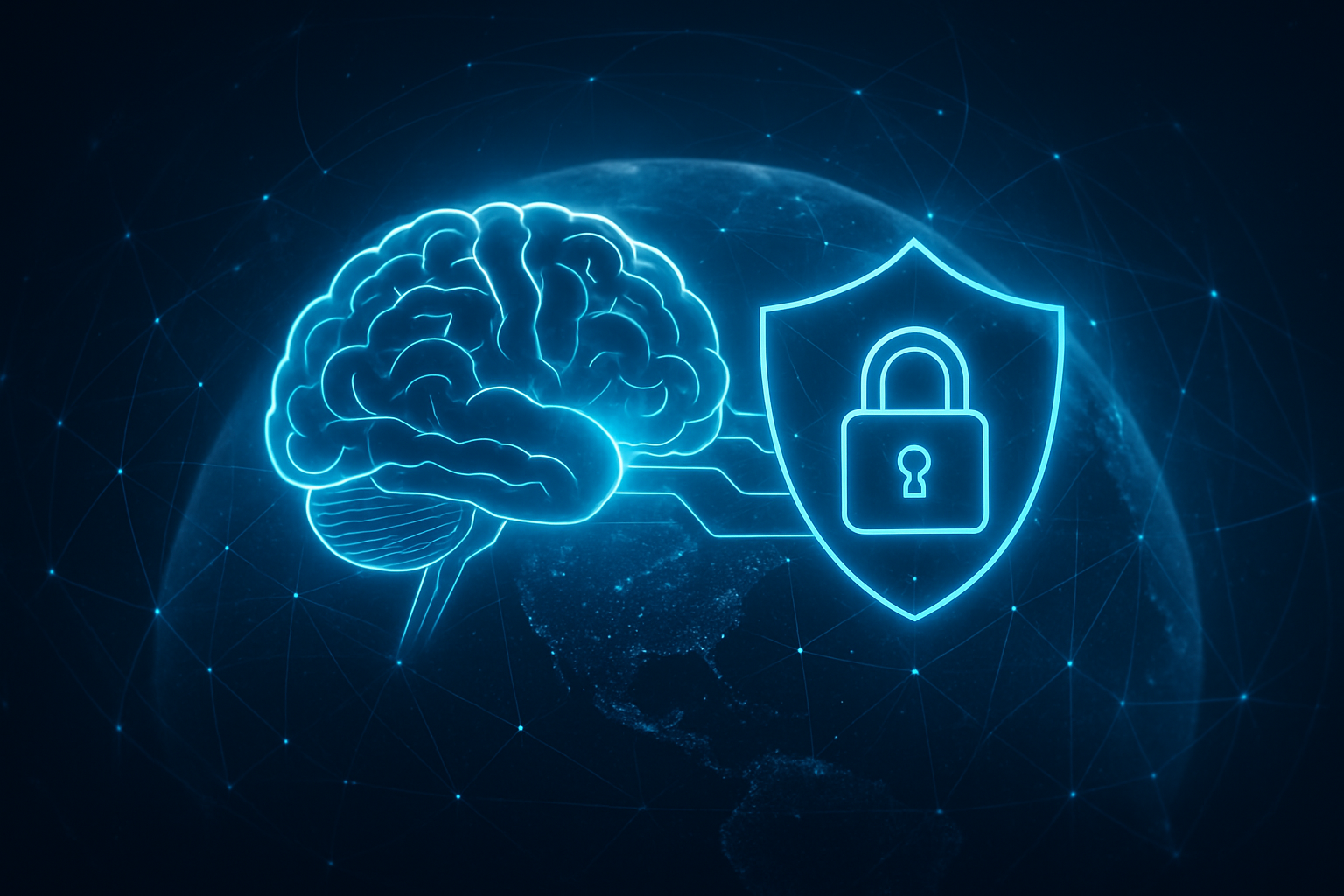Data privacy and compliance in learning and health platforms: a dual industry challenge
Companies that provide online learning and health services now face major data privacy and compliance problems. Because of increased digital change, platforms are able to gather, keep, and examine user data to enhance their services and focus advertising. Still, collecting this information makes privacy a major issue and requires stricter efforts to respect user rights.
A lot of private information is managed in both learning and health, such as students’ marks and test results, and in health, information about patients’ medical history. It is very important to keep data private and secure. At the same moment, both GDPR and HIPAA are introducing strict regulations on data use and strict penalties for anyone caught not following them. This article examines the double data problems that edtech and health tech companies are dealing with right now.
Learning Platforms - Navigating Privacy and Compliance Minefields
The world of edtech is a booming market, projected to hit $200 billion in 2025. Rapid digitization of operations from admission to assignment and testing at schools and universities is resulting in an unprecedented harvest of academic data. This data, which powers personalized learning and other benefits, also represents a significant privacy risk unless secured and controlled appropriately.
Expanding Data Collection
Online learning platforms are amassing all types of student information - demographics, test performance, learning disabilities, web activity logs, etc. For example, major VLEs (virtual learning environments) like Canvas and Blackboard collect upwards of 1,500 data points per user. Apps even capture keyboard dynamics and facial expressions via webcams to analyze engagement and emotions.
Parents are concerned about data mining happening in K-12 schools. Apps like ClassDojo for schools track children's activities and share that information with other companies. Because data is being collected more widely, compliance and clear reporting are now crucial.
Evolving Regulations
Schools and colleges must follow both national and state rules as well as industry standards for protecting student information. In the US, this means FERPA, which controls who has access to and can disclose school records. According to GDPR, the EU requires strict permission for collecting or sharing any personal information about children under 16.
On top of all that, different US states have their own student privacy statutes (like the California Consumer Privacy Act). There are also international regulations—such as COPPA, which directly governs edtech companies serving children. It’s a constant challenge to keep current with these changing rules.
Data Breaches
With the rapid growth in collected student data, online learning systems have become prime targets for cyberattacks. In 2021 alone, 26 million student records were compromised in K-12 data breaches, highlighting vulnerabilities.
School platforms are targeted by hackers who can steal important personal information such as SSNs, health, disciplinary history, etc., and major universities have also been attacked to steal students’ intellectual property stored in internal platforms.
All academic data on digital learning platforms should be protected by strong privacy protections and security protocols; these incidents demonstrate the need for them. The failure to prevent breaches can do serious damage to an institution's reputation and lead to lawsuits.
Compliance Burdens
It’s an arduous process for edtech companies to have to prove they are compliant with a variety of privacy regulations. They must document what data is collected, stored, used, and shared, and that their consent and authorization protocols are working.
Compliance costs and the complexity of requirements are a particular problem for small startups. However, if they forget this duty, they face fines, lawsuits and a ruined trust in case of the breach. Negotiating regulations is becoming vital to appointing dedicated data compliance staff.
Health Platforms - High-Risk Data Challenges
The global digital health market is projected to grow at a CAGR of 27.7% to reach $660 billion by 2025. Telemedicine, mHealth apps, wearables and patient portals are transforming healthcare and digital health product development consulting services while amassing critical health data. With lives at stake, protecting this data is paramount, along with strict adherence to expanding compliance rules.
Expanding High-Risk Data
Digital health platforms and wearables now capture all kinds of patient medical information from prescriptions, lab tests, and scans to real-time vital signs and geospatial location. Health data is extremely sensitive — it can put people’s jobs, insurance eligibility, and other things at risk if revealed.
Aggregating more data than ever, remote patient monitoring systems are also now analyzing everything from activity levels to sleep patterns. As healthcare moves outside clinical settings, transmitting and storing this data securely on health tech platforms gets more complicated. Hacking risks escalate given the high black market value of medical records, which can sell for over $1000 each.
Find more information here: https://www.darly.solutions/.
Compliance Maze
For US healthcare organizations, HIPAA establishes baseline federal privacy and security rules for safeguarding patient medical records and data. Health apps and software enabling patient data access must demonstrate HIPAA compliance covering data storage, backup, access controls, and other safeguards.
But a patchwork of other laws also applies, including state medical privacy policies. The 21st Century Cures Act introduced new interoperability requirements for health platforms to share patient data more easily. State cybersecurity laws also typically cover digital health vendors.
Navigating this complex compliance maze is an ongoing struggle. The risks are underlined by HIPAA violation penalties - over $100 million levied in the past decade, including a record $16 million fine against Anthem health insurer after a breach impacting 78 million people.
Evolving Data Rights
Patients and consumers are gaining more control over their health data. HIPAA guarantees patients access to their medical records held by covered entities while also restricting the use of this data for marketing/sales.
The 21st Century Cures Act requires health apps to share data with third parties when a patient requests it. The EU’s GDPR also gives consumers ownership over personal data, including medical information held by digital health platforms, wearable makers, and other entities. New "right-to-access" regulations worldwide are also compelling disclosure of specific data being collected.
All of this means that health tech companies need to invest more in figuring out what patient information they have and where it lives in order to honor data access requests efficiently. With data volumes expanding exponentially, automating this capability is a must-have.
Interoperability Hurdles
The 21st Century Cures Act is just one of many healthcare reforms that aims to break down data silos. For this to happen, health platforms such as patient portals and telemedicine apps need to follow common standards for sharing patient records (interoperability). As a result, conflicting medical terminology, formats, and privacy protocols within digital systems prevent data from flowing freely.
For example, EHRs and wearables use different clinical vocabularies and therefore are difficult to integrate. In order for health tech vendors to be able to usefully exchange data with EHRs, they must map ontologies across platforms. Hospitals reluctant to open EHR access are concerned about cybersecurity risks from interoperability as well.
Achieving frictionless interoperability while also guaranteeing privacy remains an ongoing obstacle. But regulators continue prioritizing open data exchange to improve care coordination and reduce costs.
Conclusion
Medical education is now collecting a lot more user data on digital platforms, making it harder to comply with privacy rules. New rules require more security and greater control over data, while people’s rights to access information increase.
Both groups in this industry must be able to keep up with new regulations, secure their systems with strict access control, ensure user privacy while connecting systems, and automate compliance for their complex data streams.
Investment in meeting these needs is required, but it is essential to the trust of patients and the public. Those companies that embed privacy and compliance as strategic priorities will be the first to gain a competitive advantage. But failure to effectively secure sensitive academic and medical data can permanently damage market prospects and social legitimacy.





















